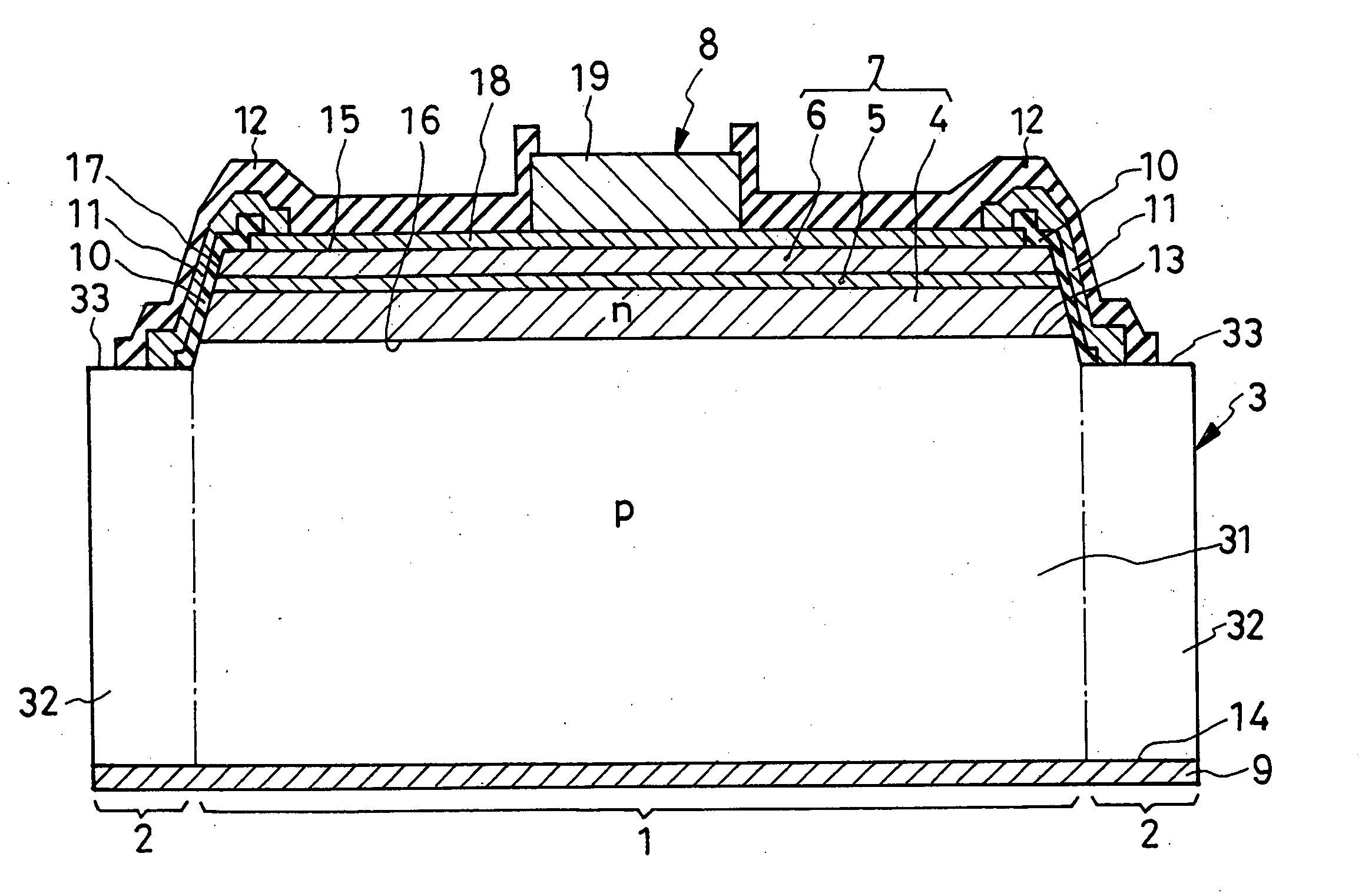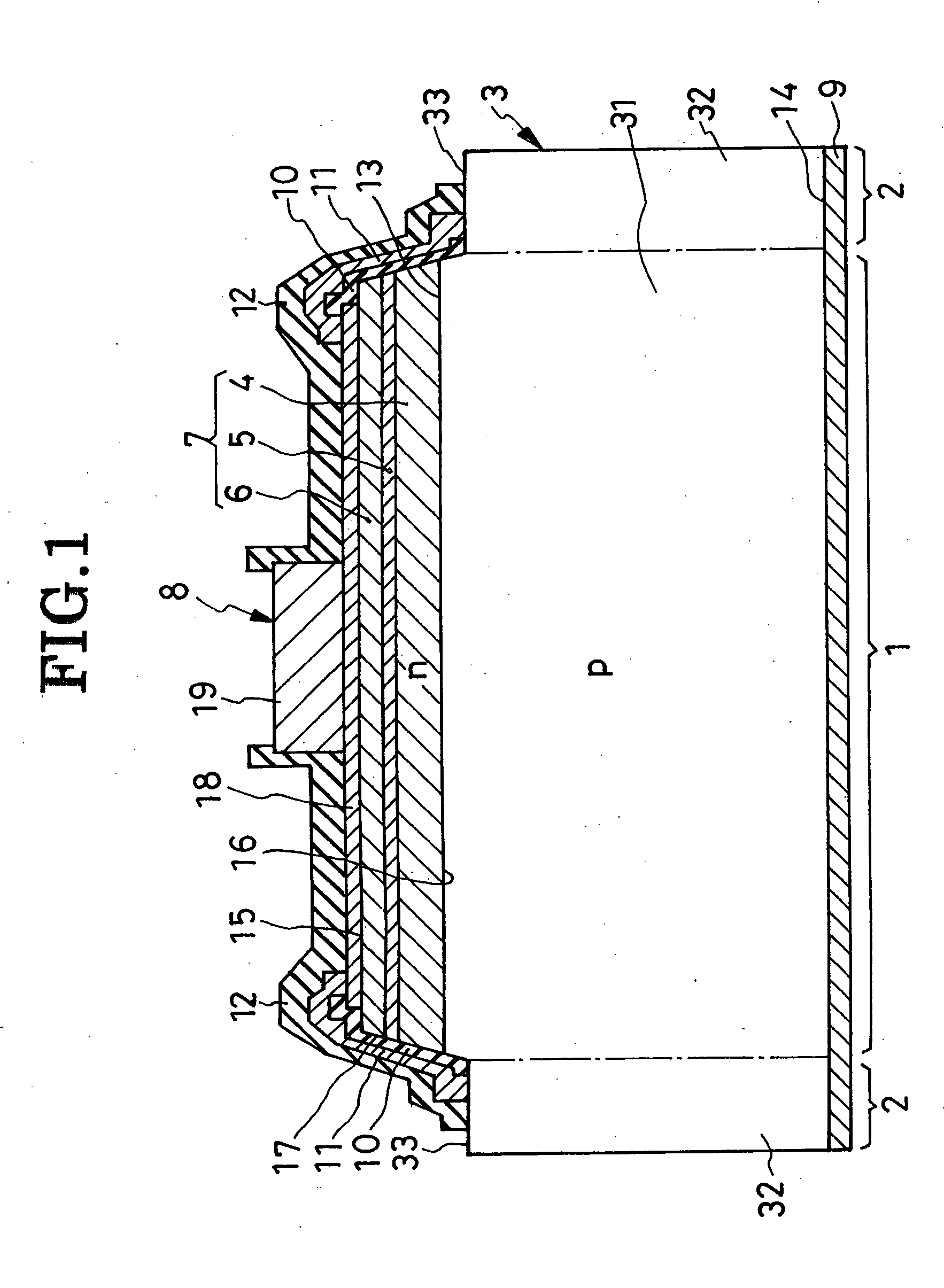Overvoltage-protected light-emitting semiconductor device
a technology of overvoltage protection and semiconductor devices, which is applied in the direction of emergency protective arrangements for limiting excess voltage/current, semiconductor/solid-state device details, and arrangements responsive to excess voltage, etc., can solve the problems of increasing the size of the complete device, unnecessarily bulky in size, and difficult to set the forward voltage of the protector diode as desired or required, etc. , to achieve the effect of less expensive construction, simple structure and less bulky
- Summary
- Abstract
- Description
- Claims
- Application Information
AI Technical Summary
Benefits of technology
Problems solved by technology
Method used
Image
Examples
embodiment
of FIG. 5
[0080] The second preferred form of overvoltage-protected LED shown in FIG. 5 differs from the FIG. 1 embodiment only in its overvoltage protector section 2a. The modified protector section 2a differs in turn from its FIG. 1 counterpart only in the absence of the insulating film 10.
[0081] As a result of the absence of the insulating film 10, the n-type semiconductor film 11 of the modified protector section 2a is directly held against the slanting side surfaces 17 of the light-generating semiconductor region 7. The n-type semiconductor film 11 may therefore be made from a material that is greater in bandgap than that of the active layer 5, preferably than those of all the constituent layers 4-6 of the light-generating semiconductor region 7. Possible current leakage from semiconductor film 11 to light-generating semiconductor region 7, or vice versa, will then be practically negligible. The other details of construction and operation as well as the resulting advantages are...
PUM
 Login to View More
Login to View More Abstract
Description
Claims
Application Information
 Login to View More
Login to View More - R&D
- Intellectual Property
- Life Sciences
- Materials
- Tech Scout
- Unparalleled Data Quality
- Higher Quality Content
- 60% Fewer Hallucinations
Browse by: Latest US Patents, China's latest patents, Technical Efficacy Thesaurus, Application Domain, Technology Topic, Popular Technical Reports.
© 2025 PatSnap. All rights reserved.Legal|Privacy policy|Modern Slavery Act Transparency Statement|Sitemap|About US| Contact US: help@patsnap.com



